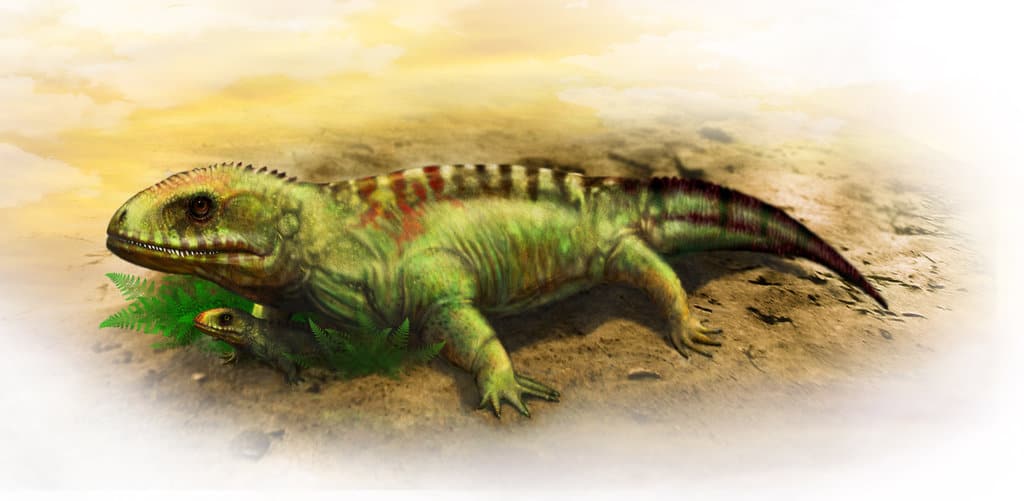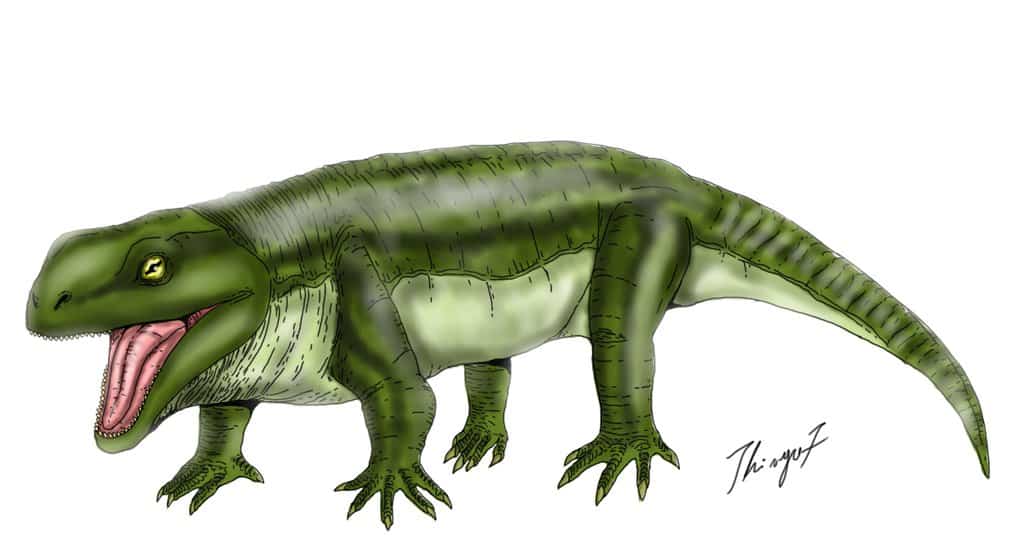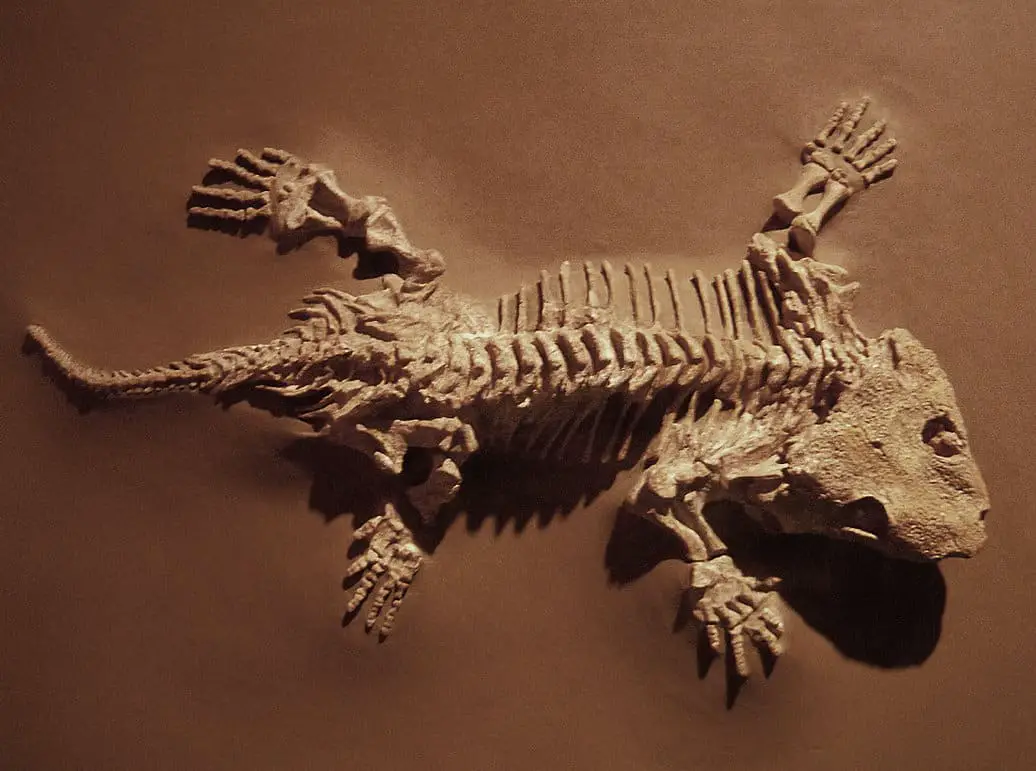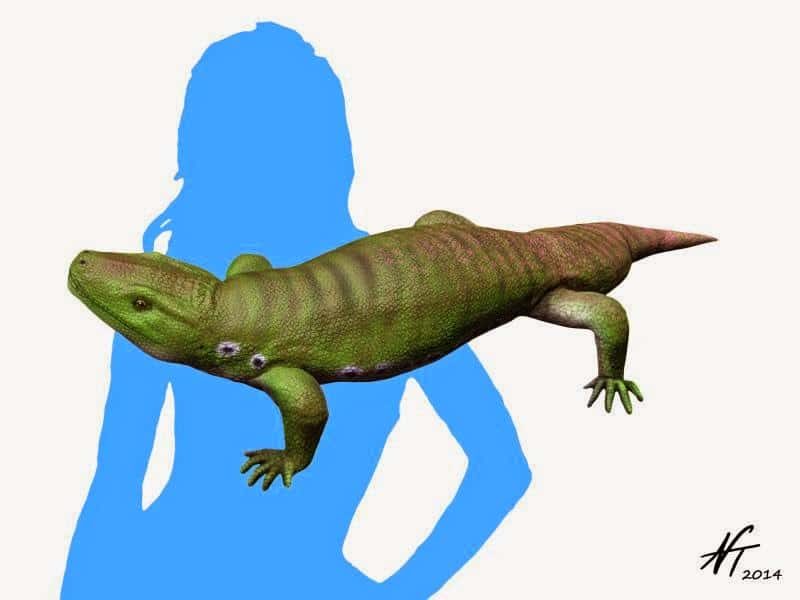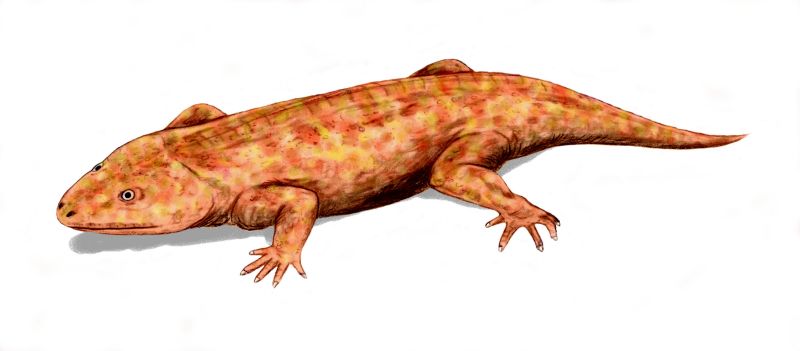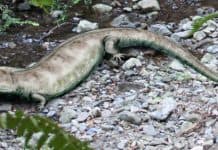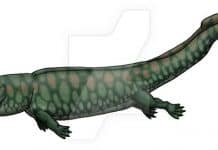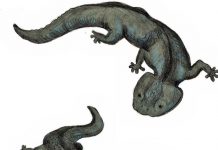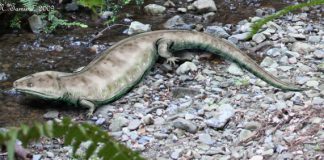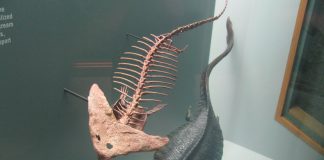Quick Seymouria Facts
- Lived in what is now known as the United States and in Germany
- Lived during the Permian period
- Was as long as a Western Hognose Snake
- Weighed as much as half a brick
- Was a carnivore
About Seymouria
Seymouria is a tetrapod that was very much like a reptile and lived approximately 280-270 million years ago – during the early Permian period. In the late 19th century, fossilized bones of this animal were found in a cave in Seymore, Texas by Charles H. Sternberg. These bones were packed away and sent to Harvard for further study. In 1939, out of boxes containing 9 different animals, Harvard’s Dr. T. E. White rediscovered Seymouria and went to Texas to look for more fossils. He then went on to describe the fossils and named it after the town it was found in.
Most Seymouria pictures make it look like it was a reptile. However, that’s not entirely correct. While it was initially classified as a reptile in the early 1940s because of its dry scaly skin, it was then classified as an amphibian, although that might not even be the whole story. Some scientists believe that this animal is actually a missing link between amphibians and reptiles.
Some interesting facts about Seymouria include: they were between 24 to 32 inches long, weighed about 2-3 pounds, walked on four legs and probably had a quite a few tricks to survive in the part of North America in which it lived – an area which was hot and humid. It is believed that it could secret salt from its snout (like a reptile) and could go without water for an extended period of time. Which is probably why its skin was more like a reptile and less like a true amphibian. However, like all amphibians, it still would have had to return to water to lays its eggs.
Seymouria was a carnivore which would have fed on smaller reptiles and amphibians. Whatever it could have found in its environment. Since its original discovery, more fossils of Seymouria have been found all over the world. They have been found in other parts of Texas, in Utah and even in Germany.
